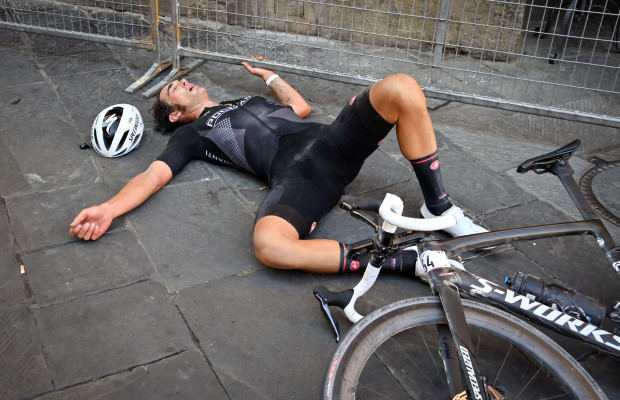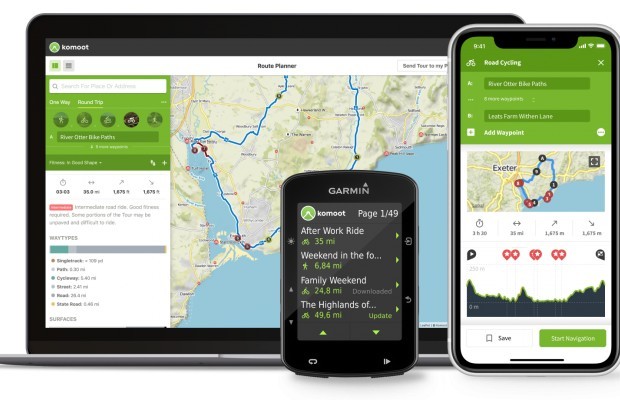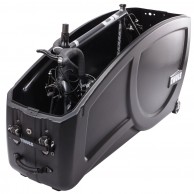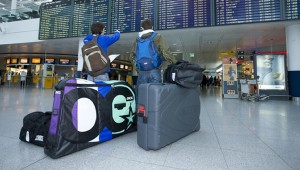How to travel with your bike on a plane
Everything you need to know to make sure your bike arrives safe and sound when you have to travel with it by plane.

Lose the fear of traveling with your bike by plane
What cyclist wouldn't like to take a vacation riding through the Alps or participate in races that go through cobblestone sections and the walls of the Belgian classics? But when you ask about it, among other reasons, what holds many back is having to travel with their bike by plane with the reputation that airports have for handling luggage without care.
However, the reality is not as bleak as they paint it. Except for people who travel frequently by plane, problems with luggage are usually anecdotal, although we occasionally see posts from professional cyclists who have had problems when traveling with their bikes.
RECOMENDADO

25 cycling gifts ideas to get it right

When do helmets have to be changed? Do they have an expiration date?

How many days should a cyclist rest per week?

Some reasons to stay away from the road in winter

S-Works: what does it really mean and where does Specialized's most exclusive label come from?

The best apps for cycling and mountain biking
If we also protect our machine properly, the chances of our bike suffering damage during transportation are minimal.
Well protected
The first step when traveling with the bike is to have a quality case that allows it to be well protected. There are different models available on the market.
The most secure cases are the completely rigid cases that have padded interiors to place the bike. They offer the highest level of protection but require disassembling several parts of the bike such as the seat post or handlebars, which can be a problem because everything has to be repositioned precisely to maintain the correct bike position and, with current bikes, due to the internal routing of cables through the steering that can complicate or even make the task impossible. They also have the disadvantage of being, by far, the most expensive.

One step down, we find cases made of resistant fabric like Cordura that have a generous padding and an internal structure to secure the bike inside. This type of cases offer a very good balance between reasonable protection, occupying little space when not in use, and a reasonable price. In fact, they are the type of cases that professional riders usually use since, depending on the brand, the bike can be placed without having to disassemble anything other than the wheels, which is important for them as they have a precise bike position.
Finally, there are lightweight bags, which have light padding and are usually designed to travel with the bike in the car without getting dirty and not for checking in on the plane. However, by taking some precautions and protecting certain areas of the bike, they can serve perfectly for air travel.

Finally, if we do not have access to one of these bags or cases, a simple solution is to go to a bike shop and ask for a cardboard box like the ones used by brands to ship bikes. Like with lightweight bags, by properly protecting certain areas of the bike and sealing it correctly, they can help us out for occasional trips.
When packing a bike for travel, the most fragile parts are the dropouts of both the fork and the frame. Usually, when bikes travel from the factory to the stores, they include plastic pieces that fit into them and prevent them from being crushed against each other in an effort for which the frame fibers are not prepared. If your frame has disc brakes, the thru-axle itself can perform that function, although we should place a piece of polystyrene, the typical white cork, between the fork legs or the frame.
Another particularly sensitive point is the derailleur and the hanger. In this case, it is advisable to unscrew the derailleur from the frame and wrap it in bubble wrap.

For the wheels, it is best to use specific padded covers. They are not expensive and work better than any homemade invention we can come up with.
Finish the job by covering the handlebar, the main tubes of the frame with bubble wrap, and placing a piece of cardboard or polystyrene between the parts that may come into contact to prevent rubbing and other possible damage.
If using a box, seal it with packing tape, generously, and you can finish by using the sealing services usually available at airports, where for a few euros, they completely wrap the box or case with transparent film.
No surprises with the fees
When transporting bikes and other special luggage, each company offers different conditions. It is advisable to review them before purchasing the ticket as in some cases, it can mean a significant extra cost.
As an example of common companies in our country, Iberia charges 50 euros per bike on short and medium-haul flights, and includes it for free on long-haul flights. Air Europa charges 75 euros for transporting the bike. British Airways includes the bike as part of the checked baggage but requires notification at least 72 hours before the flight.
These are just a few examples, but it is best to visit the company's website and check the specific conditions.
Arrive with plenty of time
Depending on the airport, checking in the bike can be very simple or extremely cumbersome. In our travels, we have found airports that are very cyclist-friendly like Palma de Mallorca, where the process is very quick, and others like Tel Aviv where we had to completely unpack our bike for security reasons.

If in doubt, it is better to arrive with extra time since, in the best case scenario, we will have to wait for an assistant to accompany us to the special baggage carousel where we can deposit our bike.
We will also need to account for this time at the destination since bicycles and other bulky luggage usually come out on a special carousel, different from the one used to collect the rest of our luggage.
As we mentioned at the beginning, incidents of damaged luggage are rare and, in the case of our bike, if we protect it properly, it is very unlikely to suffer damage. Obviously, we can be unlucky, in that case, it is up to each individual to assess the level of risk they are willing to take.